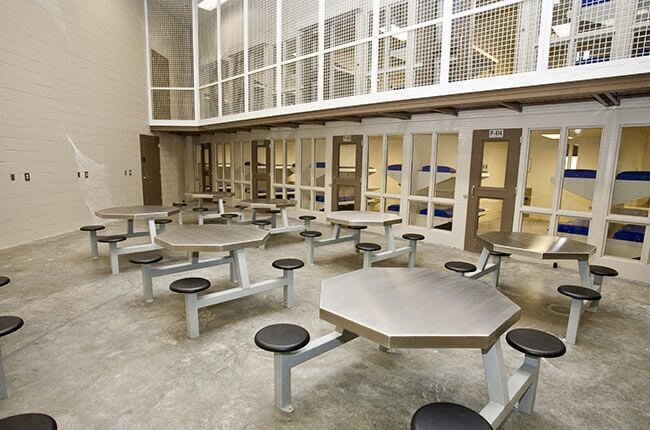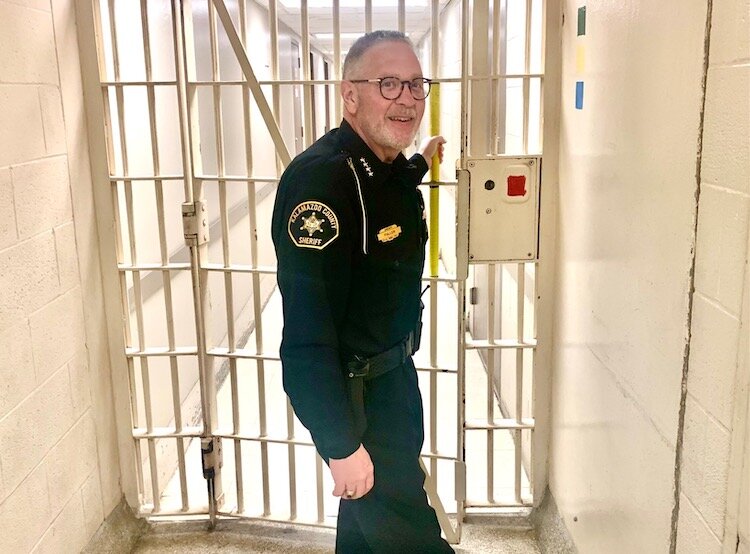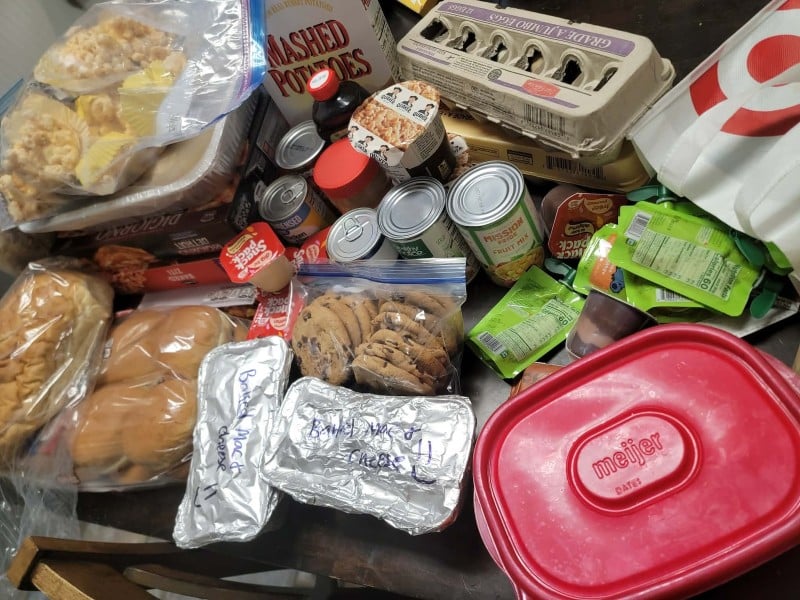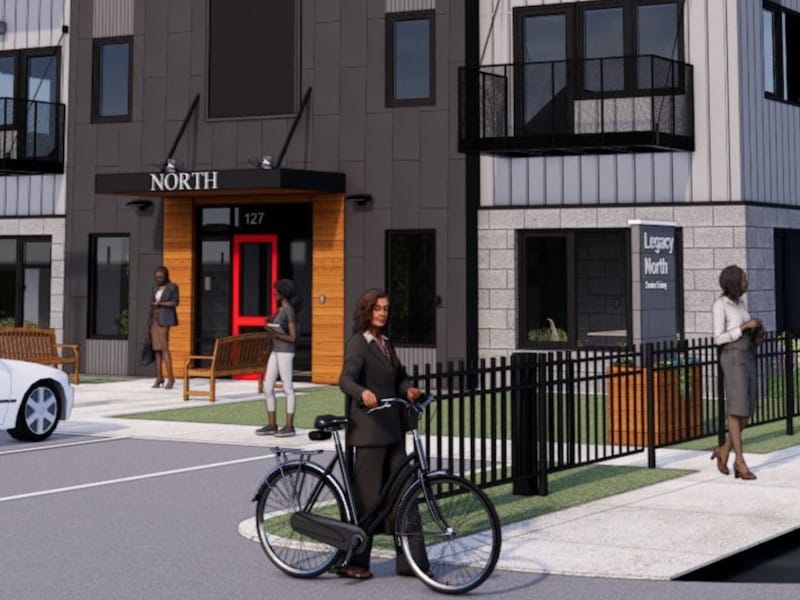Kalamazoo County Jail numbers are down; new programs likely to bring them lower
“When we talk about the programs that we’re doing at the jail, what we want to do is change the mindset of not just people who come to jail, but the mindset of our community. We need people to understand that there are other services that can help people with mental health issues, substance use disorders.”
Editor’s note: This story is part of Southwest Michigan’s Second Wave’s On the Ground Kalamazoo series.
KALAMAZOO, MI — The COVID pandemic had some hidden side effects that most people don’t notice — but police officers do.
“People became more isolated. People had less services. And people had more time to be reflective in their own minds as opposed to having anybody to work with them,” says Kalamazoo County Sheriff Richard Fuller.
In a society where everyone dials 911 for help, the social isolation during COVID and subsequent issues that grew out of it has left law enforcement officers to deal with more people who are struggling with mental health and substance use disorders, he says.
“If you have a problem in your life, you call 911,” he says. But he also says,” Our world has to figure out that 911 is not the only answer.”

With that in mind, the Sheriff’s Office will launch a spate of programs in April that are intended to help people leave the county jail in better shape than they entered — in terms of coping with life.
“Today in law enforcement, we see more people with substance use disorders,” Fuller says. “We’re seeing more people who are dealing with mental health disorders. And those two things right there sometimes are combined.”
More calls for scary situations
He remembers that as a patrol division sergeant more than 20 years ago, he would respond to about nine calls a night.
“Maybe one or two of them a week would be ‘heightened,’ meaning it was a dangerous situation, a scary situation, or something that could really take a lot of time and energy,” says Fuller, who is now in his 16th year as sheriff of Kalamazoo County.
“Now, our team members, our deputies out there, are seeing multiple (situations) a night,” he says. “They’re taking more than nine calls a night. There’s more requests for service than ever before and I try to remind people that law enforcement can’t be the only answer. … Law enforcement can’t be the only people that respond to these things.”

So the department is working to increase the services available to help inmates combat a range of issues from coping with substance use disorders and mental health needs, to addressing any of their educational and job-readiness needs. All of those aims fall under the umbrella of “Enhanced Inmate Initiatives,” and will include a program that originated at the Genesee County Sheriff’s Office called IGNITE. The acronym stands for Inmate Growth Naturally and Intentionally Through Education.
Making things better than before
Capt. Logan Bishop, who is administrator of the county jail at 1500 Lamont Ave., says the local facility has set a standard that it continues to try to reach: to release people back into society healthier and in a better place than when they in came in.
“We’re at the point now where we are getting ready to launch IGNITE in the next month,” Bishop says. “And that is going to encompass every one of those things.”
The program, which is available to inmates voluntarily, hopes to benefit those who will be housed at the jail for short or long stay and start by assessing each participating inmate’s education level as well as his or her situation in the corrections system.

Bishop says it will ask, “What is their long-term outlook at the jail? Are they here for a very serious crime where they’re not going to be able to post bond? Are they going to be sentenced for a crime? Are they only going to be here for a couple of weeks and then turned around and be released?”
Helping people make connections
Bishop says, “What we hope to accomplish is: identifying where they are on their current path; plugging them into some system — whether it be adult education, whether it be our medical-assisted treatment program which focuses specifically on substance use, or something else.”
With IGNITE and other programs, the sheriff’s office plans to partner with the Kalamazoo Public Schools, Michigan Works, NIAAA (National Institute on Alcohol Abuse and Alcoholism), and the Department of Health and Human Services (a program for new mothers and a program that mirrored that for new fathers or anyone who wants to be a better parent). Fuller says the jail will start slowly (continuing programs it has provided for many years), then increase opportunities for people to learn new life skills, anger management, and money management.
It hopes to have educators from trade schools and advisors from local financial institutions visit to explain how to do such things as budget their money, manage their credit score, or apply for a loan. Those are things some people never learn to do well, Bishop says. Fuller says the extensive renovation and expansion of the county jail in 2011 has given it more space to bring in counselors and organizations that can benefit inmates.
Making a difference by design
The jail went from being a linear design (with rows of jail cells in long corridors) to a more direct supervision model (with cells in pods that leave community spaces). That gives inmates more opportunity to move about and take part in training activities and other services. And it gives the jail more opportunity to attract outside programs to help people get out of jail sooner.

“Since my first election (2008), we talked about making sure that there were programs that were designed to help people achieve something while they’re spending time here and hopefully give them the opportunity to not come back,” says Fuller. Working with the Office of Community Corrections and Kalamazoo County Mental Health, he says, “We’re really starting to ramp up some things.”
The jail also intends to partner with organizations like the Urban Alliance, whose Momentum program was able in 2019 to help seven out of nine parolees land jobs with businesses willing to give them an opportunity. Before the COVID slowdown, about 55 employers were set to participate in that job skills program. Urban Alliance has not restarted the Momentum program thus far, however, but now has a beneficial life skills training program that the jail will utilize called Change of Status.
A smaller roll-call is a good thing
Fuller says the number of people being incarcerated in Kalamazoo County is down. The Kalamazoo County Jail housed about 385 people on an average day before the COVID-19 pandemic struck in the spring of 2020. Now it averages about 330 on a warm day. More incidents and arrests tend to occur on warm days and weekends, Fuller says.
One of two big things that have helped reduce the number of people incarcerated, he says, is a change in Michigan law about 18 months ago regarding the age of individuals who can be sent to jail as an adult. It was bumped up to 18. Previously, Michigan was one of 13 states in which 17-year-olds were counted as adults and could be sent to adult facilities rather than held in juvenile correction facilities.
“When that no longer happened, a large number of people quit coming to jail,” he says.
Another big change at about the same time, is that state law proscribes that police officers write citations for people to appear in court for many misdemeanor crimes rather than having them arrested and placed in jail.

“Instead of sending them to jail for an offense, you can write them an appearance citation,” Fuller says. “And again, we’re seeing a big change there.”
He says it means that people charged with misdemeanor crimes such as disturbing the peace, trespassing, and retail fraud, can be issued appearance tickets. And there’s a higher threshold of proof for a person to be brought to jail by law. Jail is not the first option — first, there has to be a citation.
Something for everyone
Of all the people booked into the county jail, 98 percent are released back into their home communities, many in a matter of days or weeks, Bishop reminds. About 6,600 people were booked into the jail last year.
“If we warehouse them — bring them in, throw them in the corner and we do nothing with them — then we throw them back out,” Bishop says “Then they get to come right back in. And the guy down at the end of the bar, he’s the one that’s paying for the meals. He’s the one that’s paying for the electricity. He’s the one that’s paying for all this stuff. And maybe his car is going to be the one that is broken into.”
Fuller says, “When we talk about the programs that we’re doing at the jail, what we want to do is change the mindset of not just people who come to jail, but the mindset of our community. We need people to understand that there are other services that can help people with mental health issues, substance use disorders.”
But why should people want to see fewer people incarcerated?
“Some groups might say it benefits us all because we’re spending less money housing people in a jail,” Fuller says. “Other groups will say there’s a benefit to society as a whole because we’re not warehousing persons.”
But he says he thinks, “Fewer people in the jail means that those people are out in the community and maybe benefitting the community in some way they wouldn’t be able to if they were in jail.”















